
Site is in development off and on. Link buttons with white backgrounds haven't been completed. Colored buttons should work. Please let me know if you encounter a broken link. Comments and suggestions welcome
San Pedro Sites
Double Adobe
The first 'official' dig I remember was a weekend sojourn in 1968 or 1969 down by the San Pedro River outside of Fort Huachuca to a site known as Double Adobe on Whitewater Draw. A controversial activity had occurred exposing materials encountered and Bruce Huckell (far right in left photo) and I went down as members of a small crew to recover whatever we could. I was unaware of the controversy at the time and we just spent a couple of days digging around. I do remember F.B.'Ted'Sayles (second from left) and other 'dignitaries' visiting and discussing something about stratigraphy and dates. I also remember the heat and hard work.
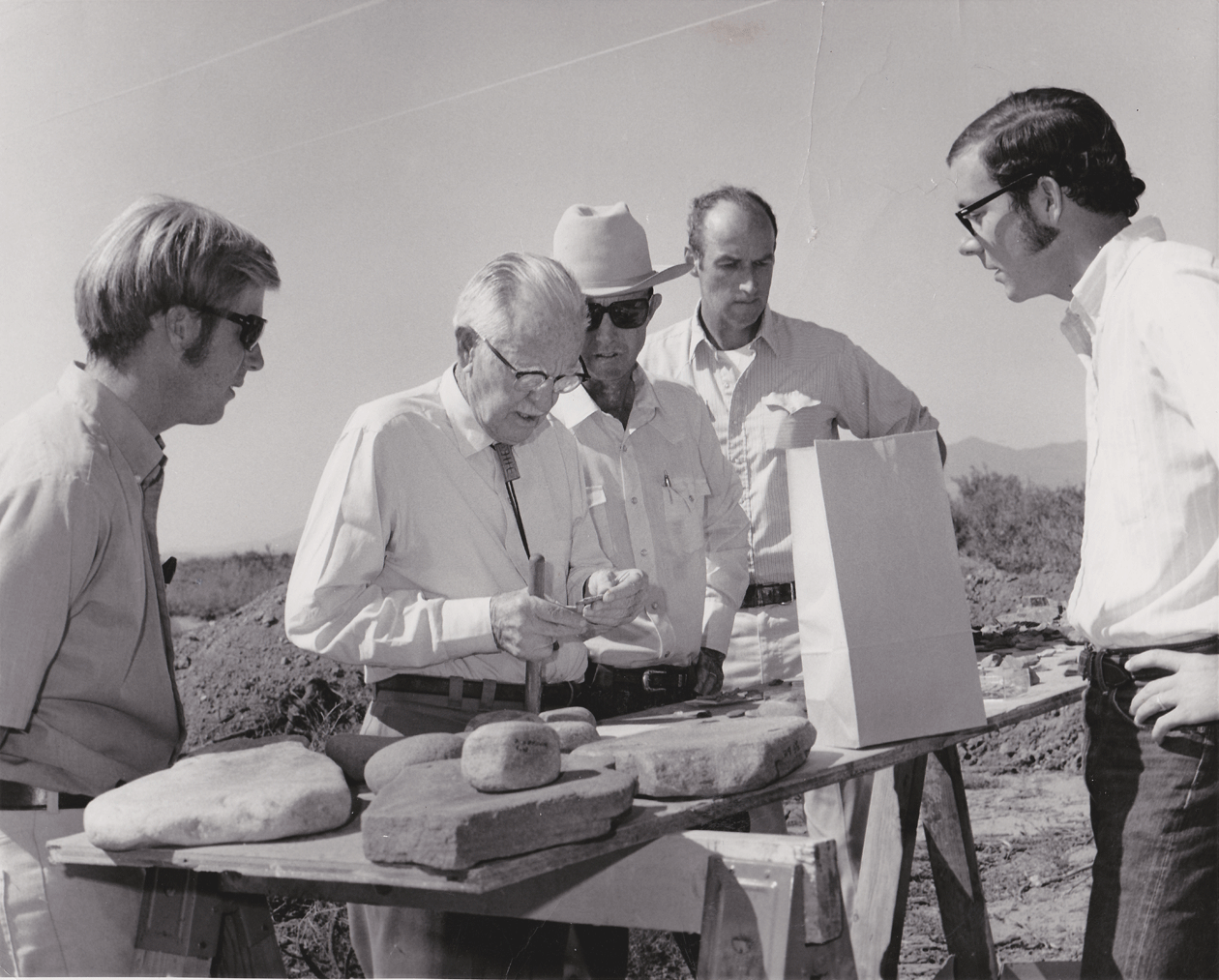
Double Adobe 1969 Left to right: Rick Windmiller, Ted Sayles, unknown, Cameron Greenleaf, Bruce Huckell. Photo by Helga Tewes, Arizona State Museum.

Double Adobe 1969 Hard at work Left to right; Bruce Huckell, Alan Mottolo, Bruce Bradley. Photographer unknown.
Lehner 1974
I am writing all of this from a deficient and occasionally inventive memory, so if you think I have something wrong, either contact me or consider this historical fiction. The project was run by C. Vance Haynes and Emil Haury with Larry Agenbroad as field director. We had a core crew of about a dozen with occasional comings and goings. If my memory serves,the basic goals were to verify the stratigraphy and geomorphology of the mammoth kill, try and determine if there was a subsequent Desert Archaic use of the locality and determine if there was any Clovis level remaining. The site is located along the San Pedro River in southern Arizona not far from Fort Huachuka.

Left; C.Vance Haynes Right: Emil Haury
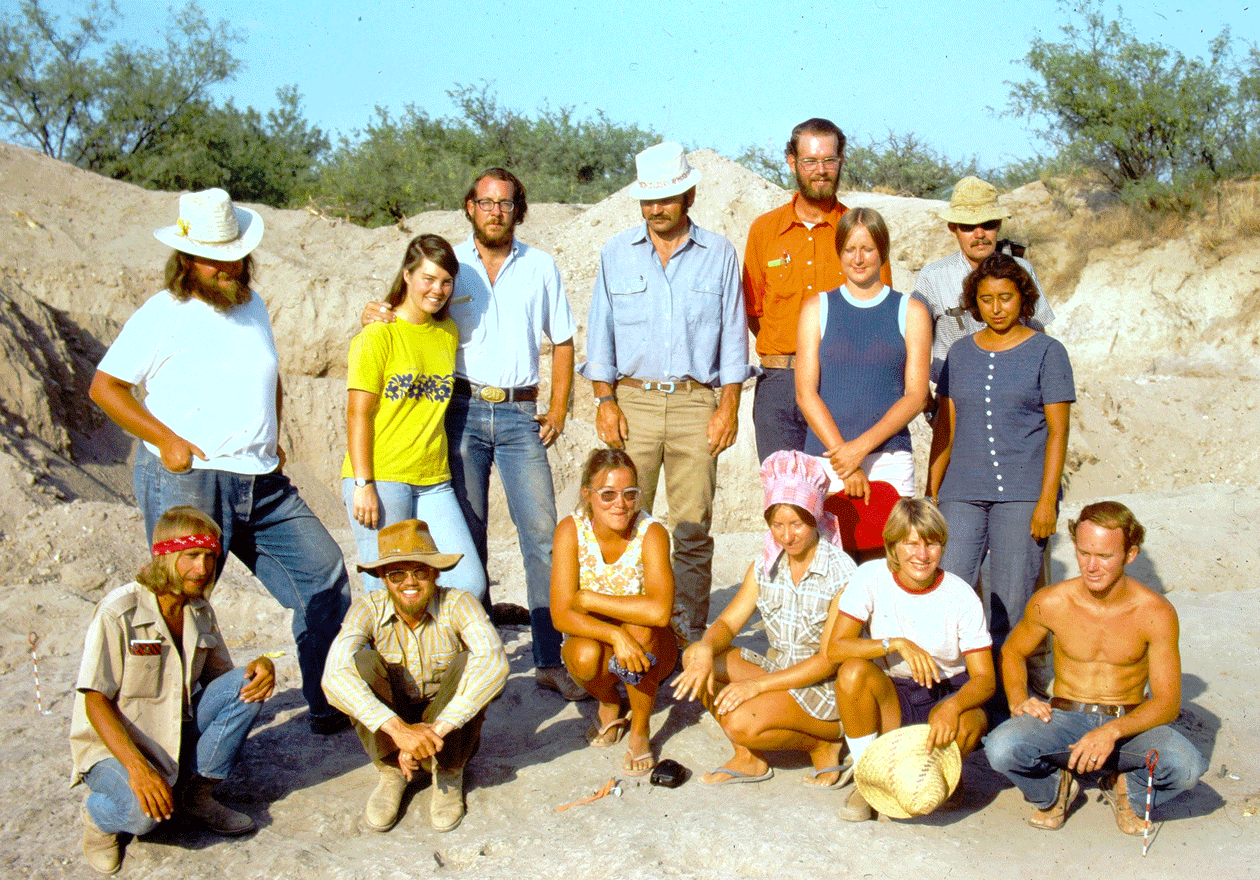
Lehner Site crew 1974. All left to right Back row: Bill Singleton, Lisa Huckell, Bruce Huckell, Larry Agenbroad, David Hughes, C.Vance Haynes; Middle row:Peggy Corman, Norma Ajeman; Front row: Jeff Saunders, Bruce Bradley,Mary Ann Jones, Cheri Landry, Jane Rosnthal, Jim Mead.

Lehner was the first Clovis site I helped excavate. It was a 1974-75 follow-up excavation of the original 1950s work done by Emil Haury. I was there in July/August 1974. The day-time temperatures were well into the 100s F (in the shade, which was absent in the dig). Humidity was in the single digit percentile. To top this off the sediment we were excavating was a black matte (which absorbed heat) underlain by a white marl (which reflected it). Our only respite was Ed Lehner's carport or the big mulberry tree in his front yard. Fortunately, whoever was in charge of the logistical arrangements had set up our accommodations in a hummingbird reserve in Ramsey Canyon in the nearby Huachuka Mountains. It was a beautiful setting with oak trees shade and a higher cooler altitude that cooled down somewhat at night. We resided in nice cabins with simple but modern facilities and commuted to the site . All was well until a massive wild fire burned off most of the mountain, although the reserve was spared. We arrived at the site in the morning just at first light and worked until just after noon. Then a long lunch break to avoid the highest heat and another couple of hours work in the evening. This experience encouraged me to resolve to avoid desert excavations in summer. You will note that summer work in subsequent years was mainly in Wyoming and Colorado.
Ramsey Canyon in the Huachuka Mountains, southern Arizona

Cabin in Ramsey Canyon hummingbird reserve.
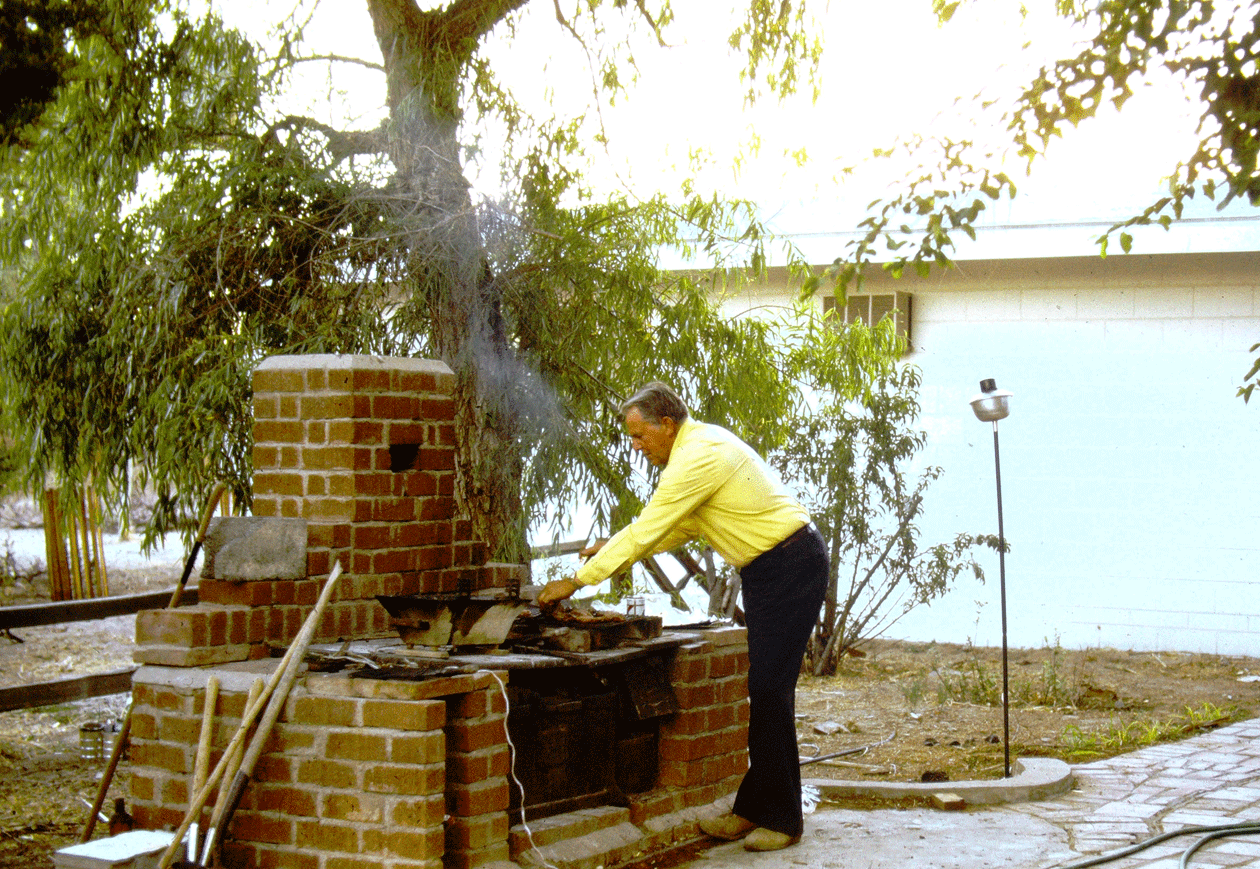
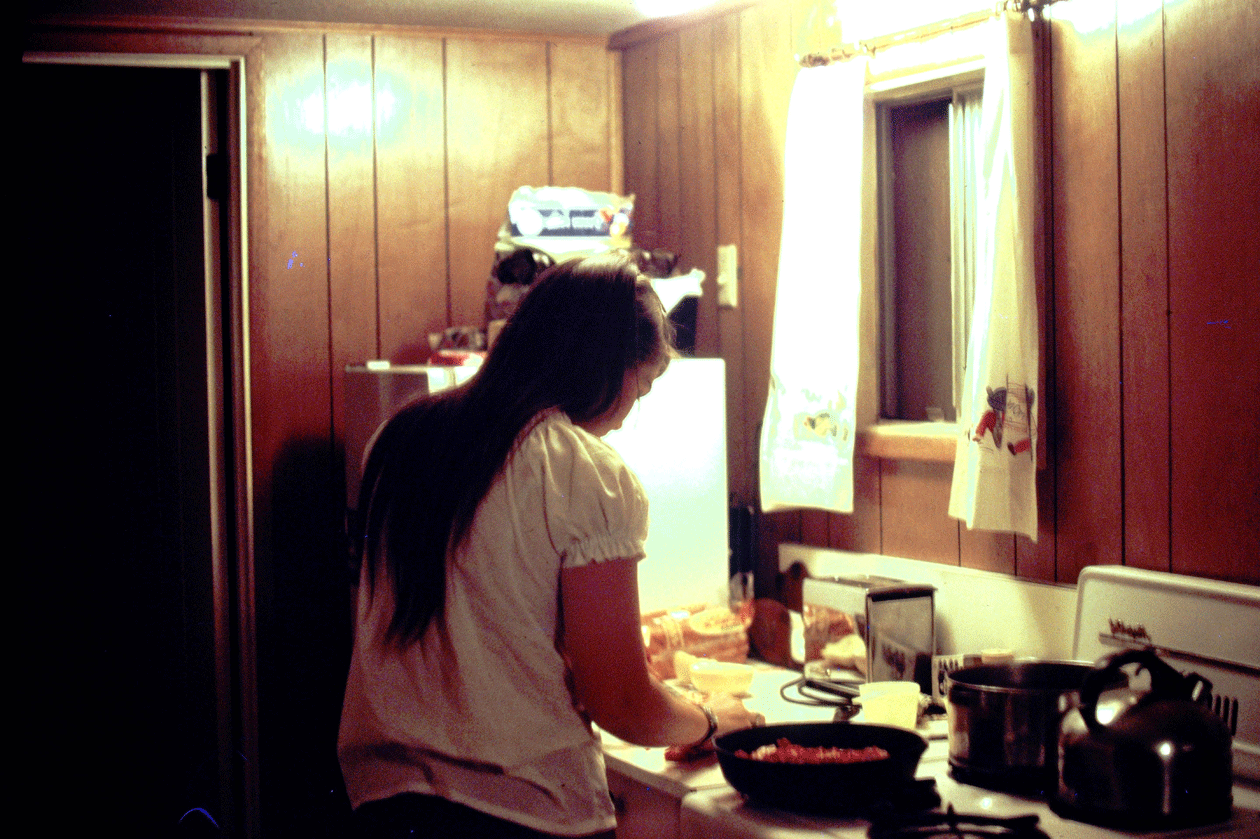
Lisa Huckell in cabin kitchen.
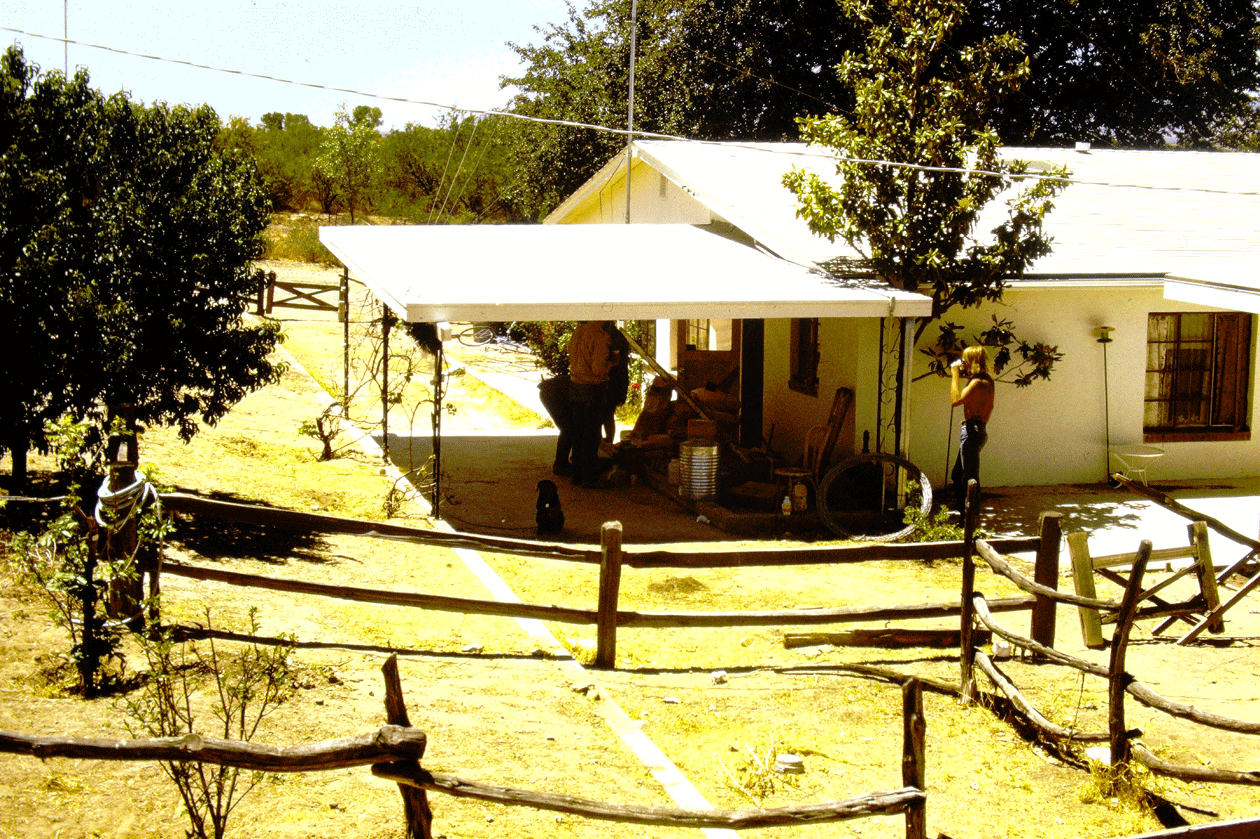
The carport shade. Mulberry tree behind house.
Ed Lehner
After removing the overburden with a bulldozer we uncovered the unit were were expecting, known as a black matte. Immediately on top of this we encountered widely scattered stone flakes of coarse-grained materials. These were probably Early Desert Archaic pieces rather than Clovis. From this point on excavations were done with small hand tools such as trowels and brushes. Under the black matte we uncovered scattered large mammal bones of bison, horse and mammoth, but no associated stone tools.

overburden removal
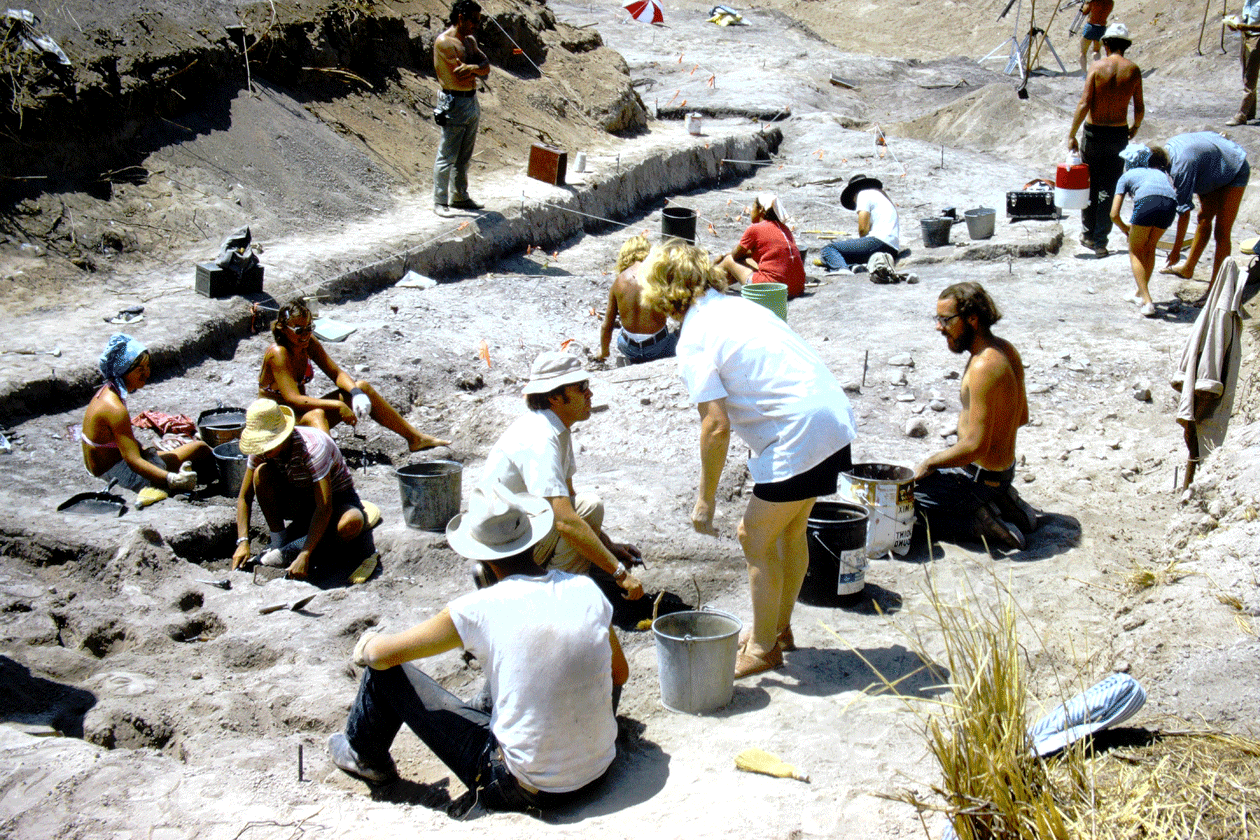
crew excavating

bone concentration

clearing excavation surface

hand tool excavation
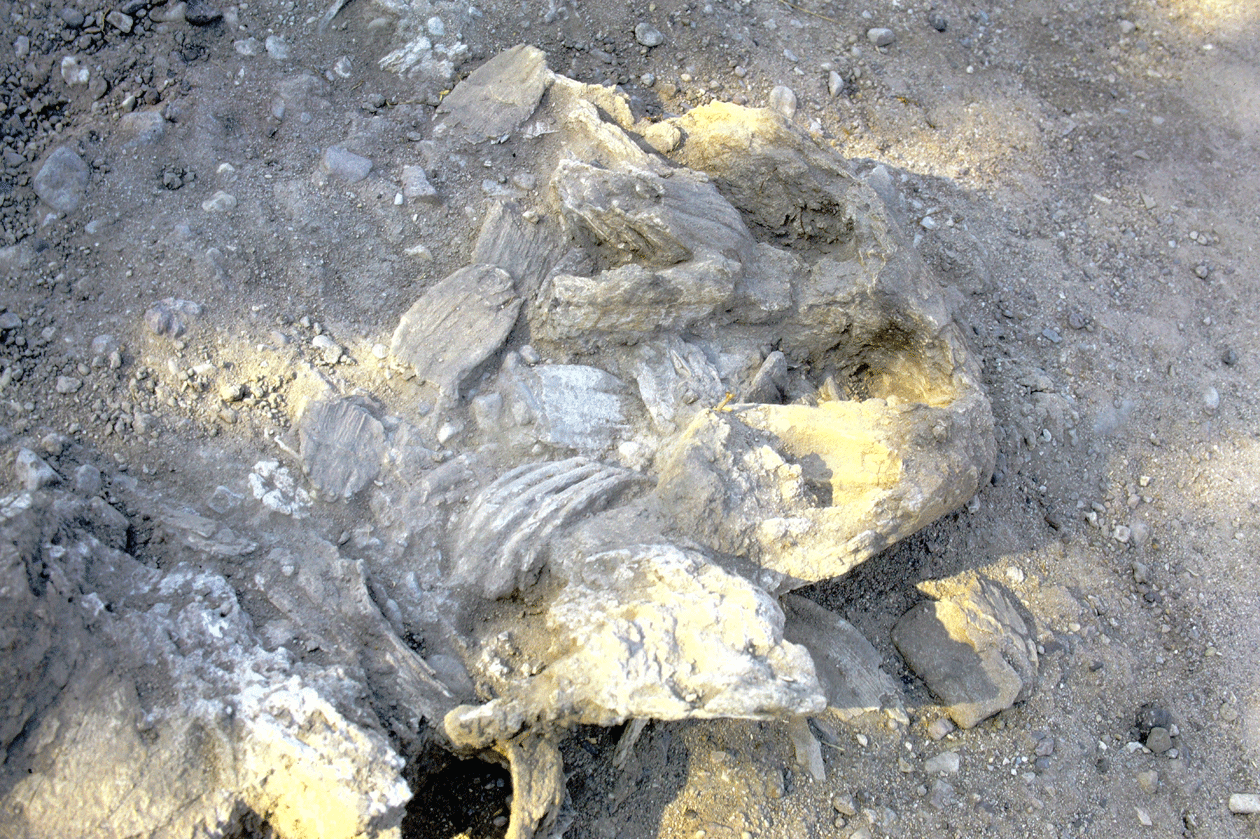
mammoth mandible

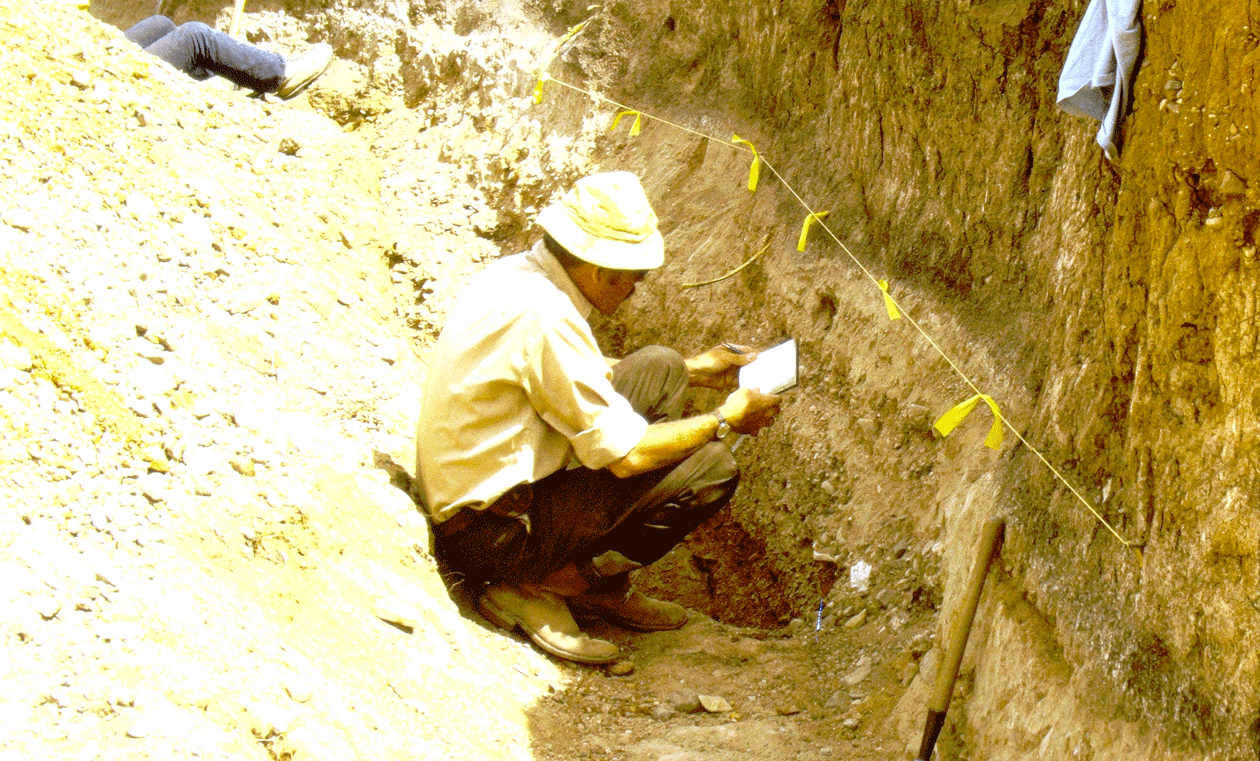
stratigraphy
Vance documenting stratigraphy

stone flakes in place

mammoth (?) vertabra

documenting finds
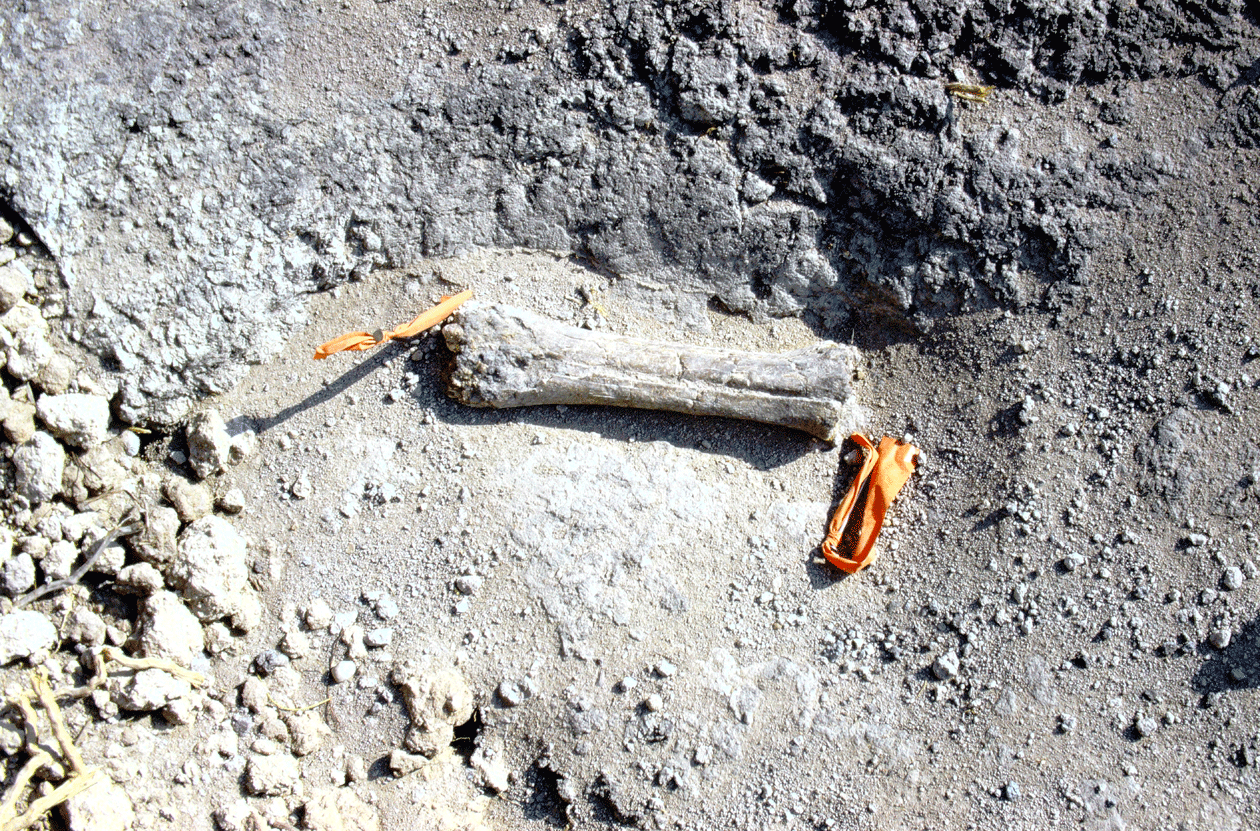
bison metacarpal?

Casts of Clovis points from the 1950s excavations at Lehner
More work was done at the site in 1975 but I was off to Wyoming to work with George Frison on another Clovis site- Colby.
During the dig in 1974 a documentary was filmed. This is a whole additional story but it was the first I was in dealing with the peopling of the New World. It was a time when there was NO doubt about how, when and from where people arrived- the glory days of Clovis First through Beringia. My role in the documentary was no different than any other crew member except that they paid me to demonstrate the making of a Clovis point. It was my first introduction to the process of hurry-up-and-wait that film making is. They set me up under a tree but then covered the tree so I was in shade. This cover was constantly being moved for getting just the right lighting. The director also had a bit of a learning curve as it was next to impossible to redo a scene. Once a flake is removed it just can't be put back and the action repeated (except I did this for the fluting). The outcome of this combination was I made a single Clovis point over a full two-day period. Fortunately, I didn't break it during fluting (a not unusual occurrence then). This Seeking the First Americans documentary was a PBS film in the Odyssey series first shown in 1980 and is still considered a classic.
I didn't officially work on any other Clovis digs in southern Arizona but did keep current with what was being found, visited various sites and studied artifact collections. Much of this was done with Bruce Huckell and through continued connections with Vance Haynes.
Murray Springs
The most important Clovis site in the area was Murray Springs, excavated from 1967 through 1971. I consider it the most important because it was excavated with state-of-the-art methods and techniques, was completely interdisciplinary and is well published.
My only involvement in the dig was a short visit with a colleague, I think in 1969 or 1970. Work was in progress on one of the kill. We parked with everybody else in a designated area adjacent to the dig. While walking over to the excavation, I noticed something out of place under a creosote bush. On closer inspection it looked like a small segment of the edge of a chert biface. I cleared off just a small portion and it was obviously something important. I refrained from further exposing it and went and told Tom Hemmings about it. we went back and he carefully exposed a large fragment of a Clovis point midsection. This was an exciting moment and led to further excavations in the area,which exposed a camp area. I think the first one ever found associated with a Clovis kill (except perhaps at Blackwater Draw?). They had suspected there might be something in the area but this find accelerated their investigations. It turned out that the Clovis point we found that day had a tip impact scar with the impact flake recovered from the bison kill area,connecting the two areas.